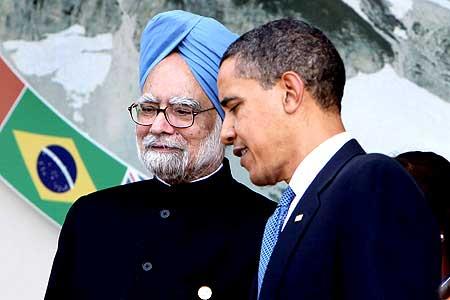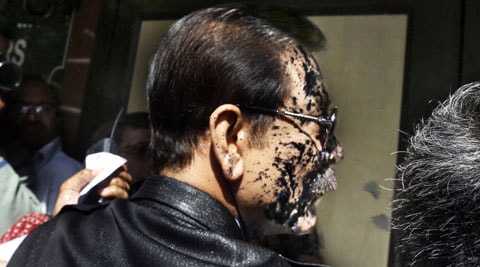
Why Russia No Longer Fears the West
The West is blinking in disbelief – Vladimir Putin just invaded Ukraine. German diplomats, French Eurocrats and American pundits are all stunned. Why has Russia chosen to gamble its trillion-dollar ties with the West?
Western leaders are stunned because they haven’t realized Russia’s owners no longer respect Europeans the way they once did after the Cold War. Russia thinks the West is no longer a crusading alliance. Russia thinks the West is now all about the money.
Putin’s henchmen know this personally. Russia’s rulers have been buying up Europe for years. They have mansions and luxury flats from London’s West End to France’s Cote d’Azure. Their children are safe at British boarding and Swiss finishing schools. And their money is squirrelled away in Austrian banks and British tax havens.
Putin’s inner circle no longer fear the European establishment. They once imagined them all in MI6. Now they know better. They have seen firsthand how obsequious Western aristocrats and corporate tycoons suddenly turn when their billions come into play. They now view them as hypocrites—the same European elites who help them hide their fortunes.
Once Russia’s powerful listened when European embassies issued statements denouncing the baroque corruption of Russian state companies. But no more. Because they know full well it is European bankers, businessmen and lawyers who do the dirty work for them placing the proceeds of corruption in hideouts from the Dutch Antilles to the British Virgin Islands.
We are not talking big money. But very big money. None other than Putin’s Central Bank has estimated that two thirds of the $56 billion exiting Russia in 2012 might be traceable to illegal activities. Crimes like kickbacks, drug money or tax fraud. This is the money that posh English bankers are rolling out the red carpet for in London.
Behind European corruption, Russia sees American weakness. The Kremlin does not believe European countries – with the exception of Germany – are truly independent of the United States. They see them as client states that Washington could force now, as it once did in the Cold War, not to do such business with the Kremlin.
When Russia sees Spain, Italy, Greece and Portugal outbidding each other to be Russia’s best business partner inside the EU (in return for no mention of human rights), they see America’s control over Europe slowly dissolving.
Back in Moscow, Russia’s hears American weakness out of Embassy Moscow. Once upon a time the Kremlin feared a foreign adventure might trigger Cold War economic sanctions where it hurts: export bans on key parts for its oil industry, even being cut out of its access to the Western banking sector. No more.
Russia sees an America distracted: Putin’s Ukrainian gambit was a shock to the U.S. foreign policy establishment. They prefer talking about China, or participating in Israeli-Palestinian peace talks. Russia sees an America vulnerable: in Afghanistan, in Syria and on Iran—a United States that desperately needs Russian support to continue shipping its supplies, host any peace conference or enforce its sanctions.
Moscow is not nervous. Russia’s elites have exposed themselves in a gigantic manner – everything they hold dear is now locked up in European properties and bank accounts. Theoretically, this makes them vulnerable. The EU could, with a sudden rush of money-laundering investigations and visa bans, cut them off from their wealth. But, time and time again, they have watched European governments balk at passing anything remotely similar to the U.S. Magnitsky Act, which bars a handful of criminal-officials from entering the United States.
All this has made Putin confident, very confident – confident that European elites are more concerned about making money than standing up to him. The evidence is there. After Russia’s strike force reached the outskirts of Tbilisi, the Georgian capital, in 2008, there were statements and bluster, but not a squeak about Russia’s billions. After Russia’s opposition were thrown into show trials, there were concerned letters from the European Union, but again silence about Russia’s billions.
The Kremlin thinks it knows Europe’s dirty secret now. The Kremlin thinks it has the European establishment down to a tee. The grim men who run Putin’s Russia see them like latter-day Soviet politicians. Back in the 1980s, the USSR talked about international Marxism but no longer believed it. Brussels today, Russia believes, talks about human rights but no longer believes in it. Europe is really run by an elite with the morality of the hedge fund: Make money at all costs and move it offshore.
The Kremlin sees its evidence in the former leaders of Britain, France and Germany. Tony Blair now advises the dictatorship in Kazakhstan on how to improve its image in the West. Nicholas Sarkozy was contemplating setting up a hedge fund with money from absolutist Qatar. And Gerhard Schroder is the chairman of the Nord Steam consortium – a majority Gazprom-owned pipeline that connects Russia directly to Germany through the Black Sea.
Russia is confident there will be no Western economic counterattack. They believe the Europeans will not sanction the Russian oligarch money. They believe Americans will not punish the Russian oligarchs by blocking their access to banks. Russia is certain a military counterattack is out of the question. They expect America to only posture. Cancel the G-8? Who cares?
Because Putin has no fear of the West, he can concentrate on what matters back in Russia: holding onto power. When Putin announced he would return to the presidency in late 2011, the main growling question was: why?
The regime had no story to sell. What did Putin want to achieve by never stepping down? Enriching himself? The puppet president he shunted aside, Dmitry Medvedev, had at least sold a story of modernization. What, other than hunger for power, had made Putin return to the presidency? The Kremlin spin-doctors had nothing to spin.
Moscow was rocked by mass protests in December 2011. More than 100,000 gathered within sight of the Kremlin demanding Russia be ruled in a different way. The protesters were scared off the streets, but the problem the regime had in justifying itself remained. Putin had sold himself to the Russian people as the man who would stabilize the state and deliver rising incomes after the chaos of the 1990s. But with Russians no longer fearing chaos, but rather stagnation as the economy slowed – it was unclear what this “stability” was for.
This is where the grand propaganda campaign called the Eurasian Union has come into its own. This is the name of the vague new entity that Putin wants to create out of former Soviet states — the first steps toward which Putin has taken by building a Customs Union with Belarus and Kazakhstan, and he had hoped with a Ukraine run by Viktor Yanuvokych. This is not just about empire; it is about using empire to cover up the grotesque scale of Russian corruption and justify the regime.
Russia would rather have swallowed Ukraine whole, but the show must go on. Russian TV needs glories for Putin every night on the evening news. Russian politics is about spin, not substance. The real substance of Russian politics is the extraction of billions of dollars from the nation and shuttling them into tropical Western tax havens, which is why Russian politics needs perpetual PR and perpetual Putinist drama to keep all this hidden from the Russian people. Outraged Putin has built up a Kremlin fleet of luxury aircraft worth $1 billion? Angry that a third of the $51 billion budget of the Sochi games vanished into kickbacks? Forget about it. Russia is on the march again.
This is why Crimea is perfect Putin. Crimea is no South Ossetia. This is not some remote, mountainous Georgian village inhabited by some dubious ethnicity that Russians have never heard of. Crimea is the heart of Russian romanticism. The peninsula is the only part of the classical world that Russia ever conquered. And this is why the Tsarist aristocracy fell in love with it. Crimea symbolized Russia’s 18th and 19th-century fantasy to conquer Constantinople and liberate Greek Orthodox Christians from Muslim rule. Crimea became the imperial playground: In poetry and palaces, it was extolled as the jewel in the Russian crown.
Crimea is the only lost land that Russians really mourn. The reason is tourism. The Soviet Union built on the Tsarist myth and turned the peninsula into a giant holiday camp full of workers sanitariums and pioneer camps. Unlike, the Russian cities of say northern Kazakhstan, Crimea is a place Russians have actually been. Even today over one million Russians holiday in Crimea every year. It is not just a peninsula; this is Russia’s Club Med and imperial romanticism rolled into one.
Vladimir Putin knows this. He knows that millions of Russians will cheer him as a hero if he returns them Crimea. He knows that European bureaucrats will issue shrill statements and then get back to business helping Russian elites buy London town houses and French chateaux. He knows full well that the United States can no longer force Europe to trade in a different way. He knows full well that the United States can do nothing beyond theatrical military maneuvers at most.
This is why Vladimir Putin just invaded Crimea.
He thinks he has nothing to lose.
http://www.politico.com/magazine/story/2014/03/russia-vladimir-putin-the-west-104134.html#.UxPf8OOSySo










 'A plausible American tactic,' Rajeev Srinivasan suspects, 'would be to try and prevent the BJP and Modi from coming to power by splitting the anti-Congress vote using the AAP, and in case that fails, to follow up with a Plan B to make India ungovernable, to create mass conflict through their agents.'
'A plausible American tactic,' Rajeev Srinivasan suspects, 'would be to try and prevent the BJP and Modi from coming to power by splitting the anti-Congress vote using the AAP, and in case that fails, to follow up with a Plan B to make India ungovernable, to create mass conflict through their agents.' The General Assembly,
The General Assembly,






















